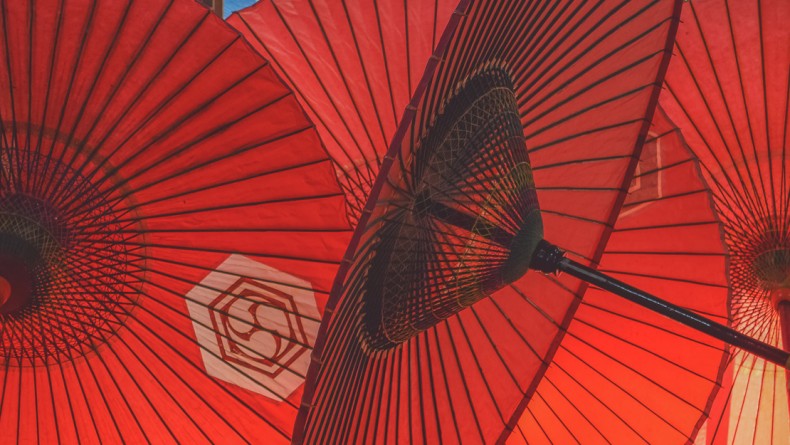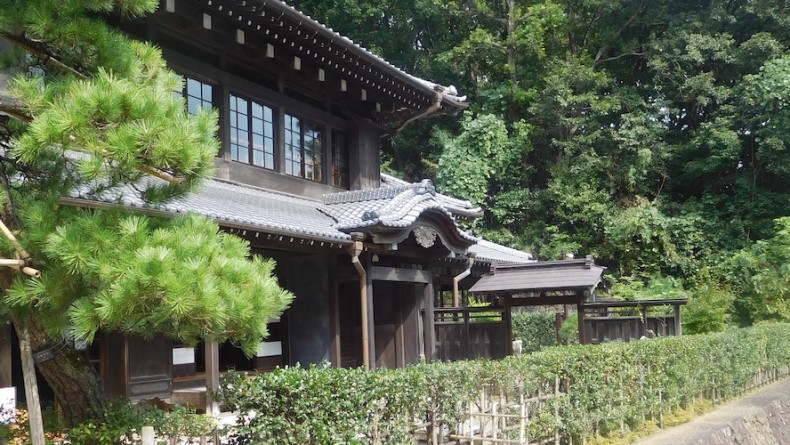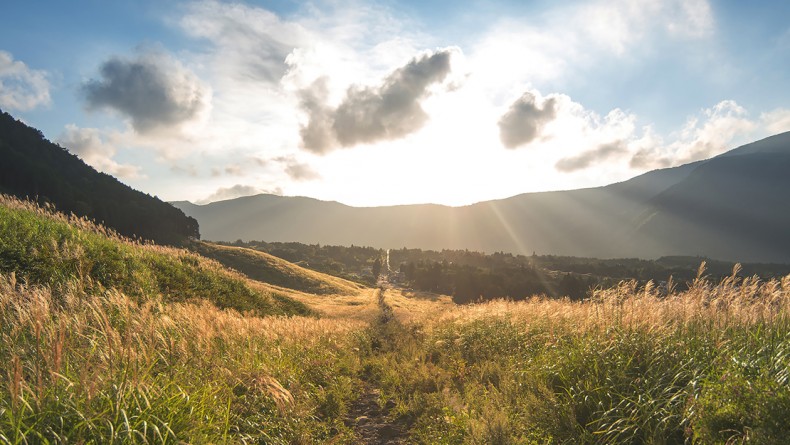Izumo, the Land of the Gods
In addition to the castle town of Matsue, the San’in region is home to many of Japan’s founding myths. Shimane Prefecture, in particular, has a number of locations found in the Kojiki, Japan’s oldest existing record of history and mythology. In fact, present day Shimane and parts of Tottori were known in ancient times as the Izumo region. Today, Izumo is located in the western part of Shimane and here you can find many places dedicated to Japan’s creation myths.
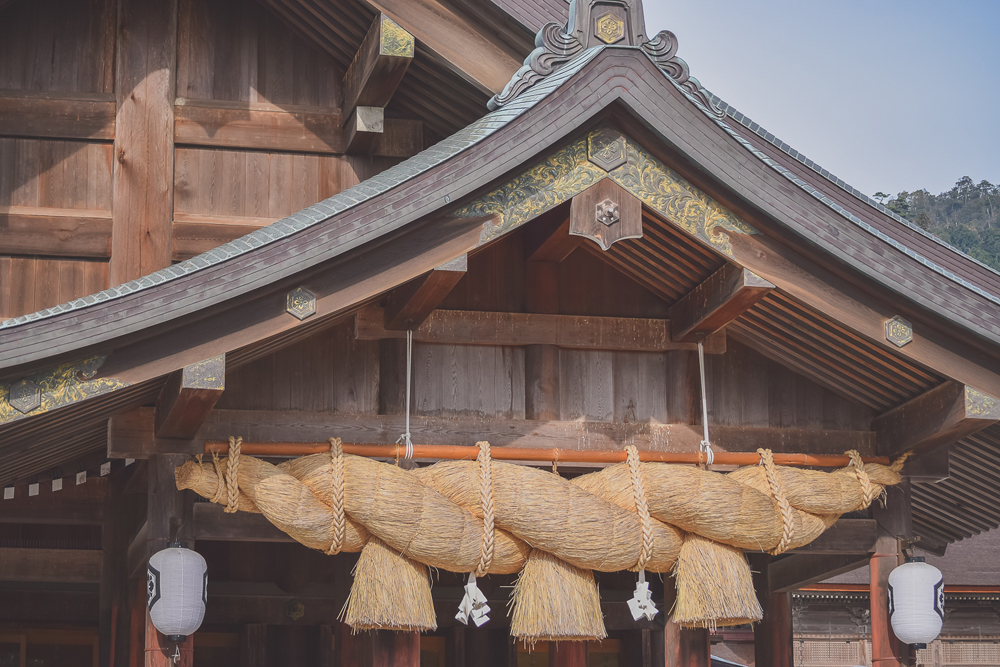
One of Japan’s Oldest Shrines
In Izumo, you will find one of Japan’s oldest and most culturally significant shrines, Izumo Taisha Shrine. Many of the buildings on the shrine complex are made of natural materials and reflect the indigenous Taisha-zukuri style, the oldest architectural tradition in Japan. Almost completely surrounded by mountains, the atmosphere here is palpably sacred, giving rise to the claim that it’s one of Japan’s leading power spots, filled with an intense, supernatural energy.
Above the main halls, there are giant straw ropes called shimenawa that resemble anacondas coiled around a tree branch. The shimenawa is significant because it represents the separation between the mortal and supernatural worlds. In fact, the shimenawa at the Kagura Hall at Izumo Taisha Shrine is the largest in Japan, measuring 13 meters and weighing five tons.
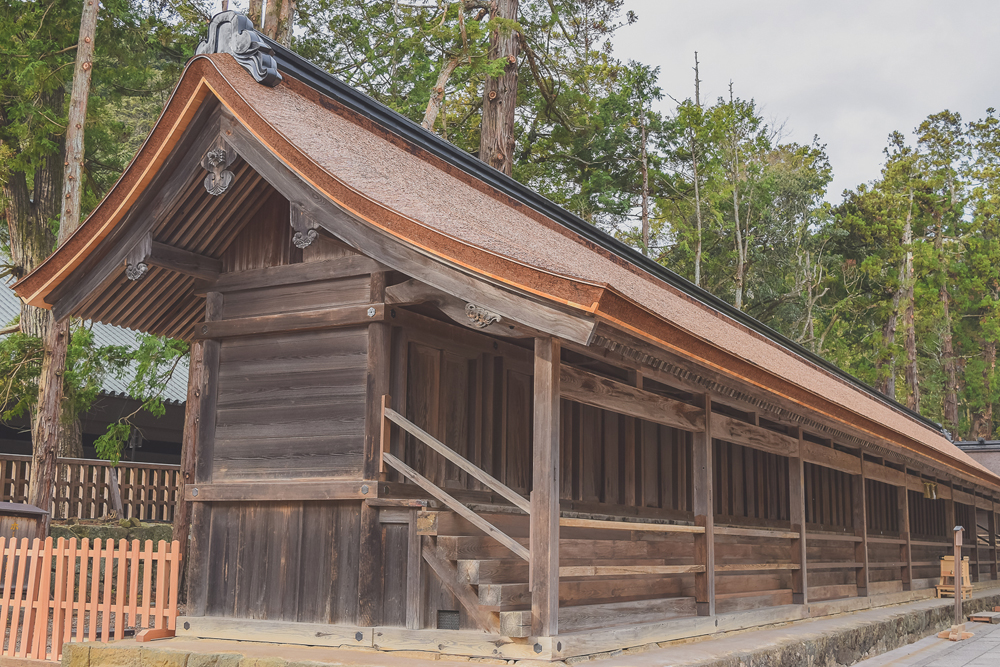
The main worship hall, or honden, where the deity Okuninushi is enshrined, is fenced to demarcate the sacred from the everyday space. Built in 1744, this honden is the tallest in Japan, measuring 24 meters. It’s claimed that the original honden rested on giant pillars and measured 48 meters. The pink spots in front of this hall represent where the original pillars rested, and their excavated remains can be found in the Shimane Museum of Ancient Izumo located close to the shrine. At the museum, you can also find Japan’s largest collection of excavated bronze swords and bronze bells, and learn more about the history of the shrine and Izumo region.
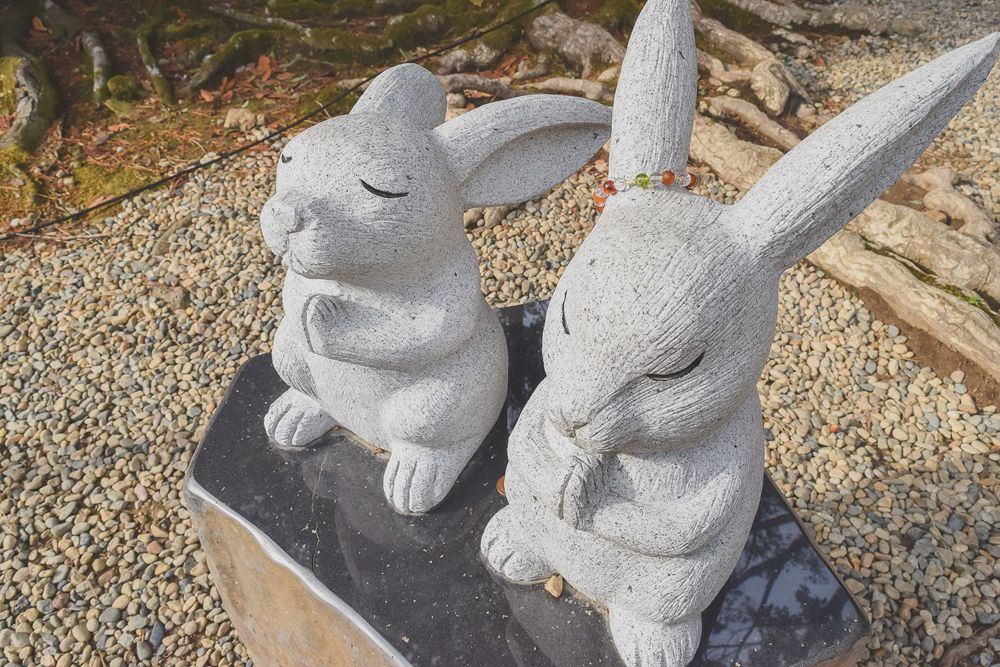
At the back of the honden, you will see cute rabbit statues. The rabbits are important to this shrine because of their connection to Okuninushi. In the Kojiki, there is a story about how the god rescued the white rabbit of Inaba from being eaten by sharks.
On either side of the honden, you will also find long, rectangular buildings known as jukusha, where the gods stay during “the month of the gods,” known in Izumo as kamiarizuki. During that month, the rest of Japan is without gods, so it’s known as kannazuki. The deities spend seven days at Izumo Taisha Shrine discussing events of the upcoming year.
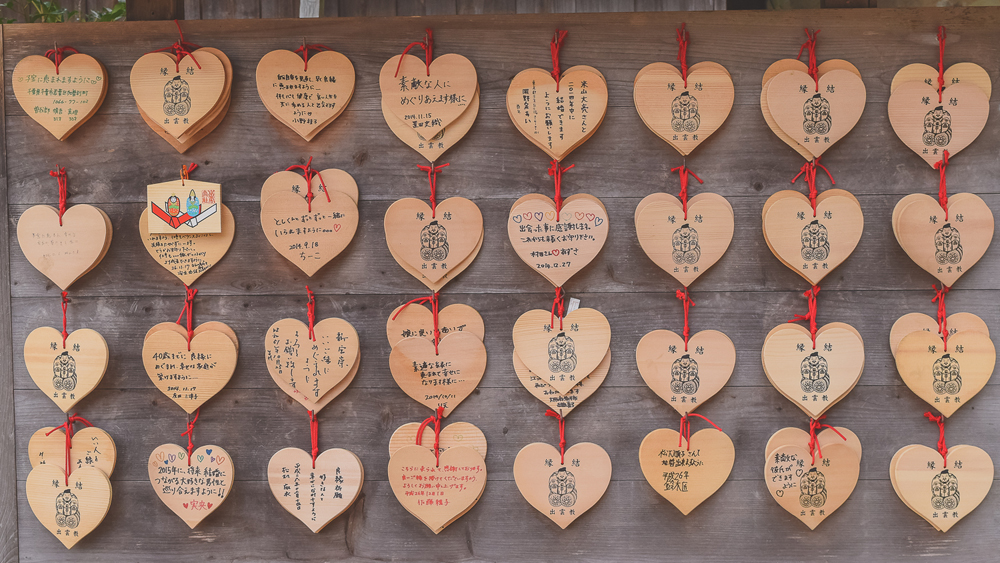
A Shrine Dedicated to Matchmaking
You also pray differently at Izumo Taisha Shrine. Instead of clapping twice as you usually do at a Shinto shrine, at Izumo, you clap four times, twice for yourself and twice for your current or future partner. Many young Japanese girls come to the shrine to pray for luck to find the right partner. This is because Okuninushi is the Shinto god of marriage and good relationships.
In fact, the shrine is very popular as a wedding destination. In 2014, a member of the Japanese royal family, Princess Noriko, married the head priest’s son at Izumo Taisha Shrine, joining the ancient family lineages of Amaratsu and Okuninushi. If you’re lucky, when you visit, you may spot a wedding or two on the site.
Close to the shrine is an entire street lined with restaurants and souvenir shops. You can try regional specialities like Izumo soba, which is made from buckwheat seeds and served with dashi, grated daikon, nori and spring onions.
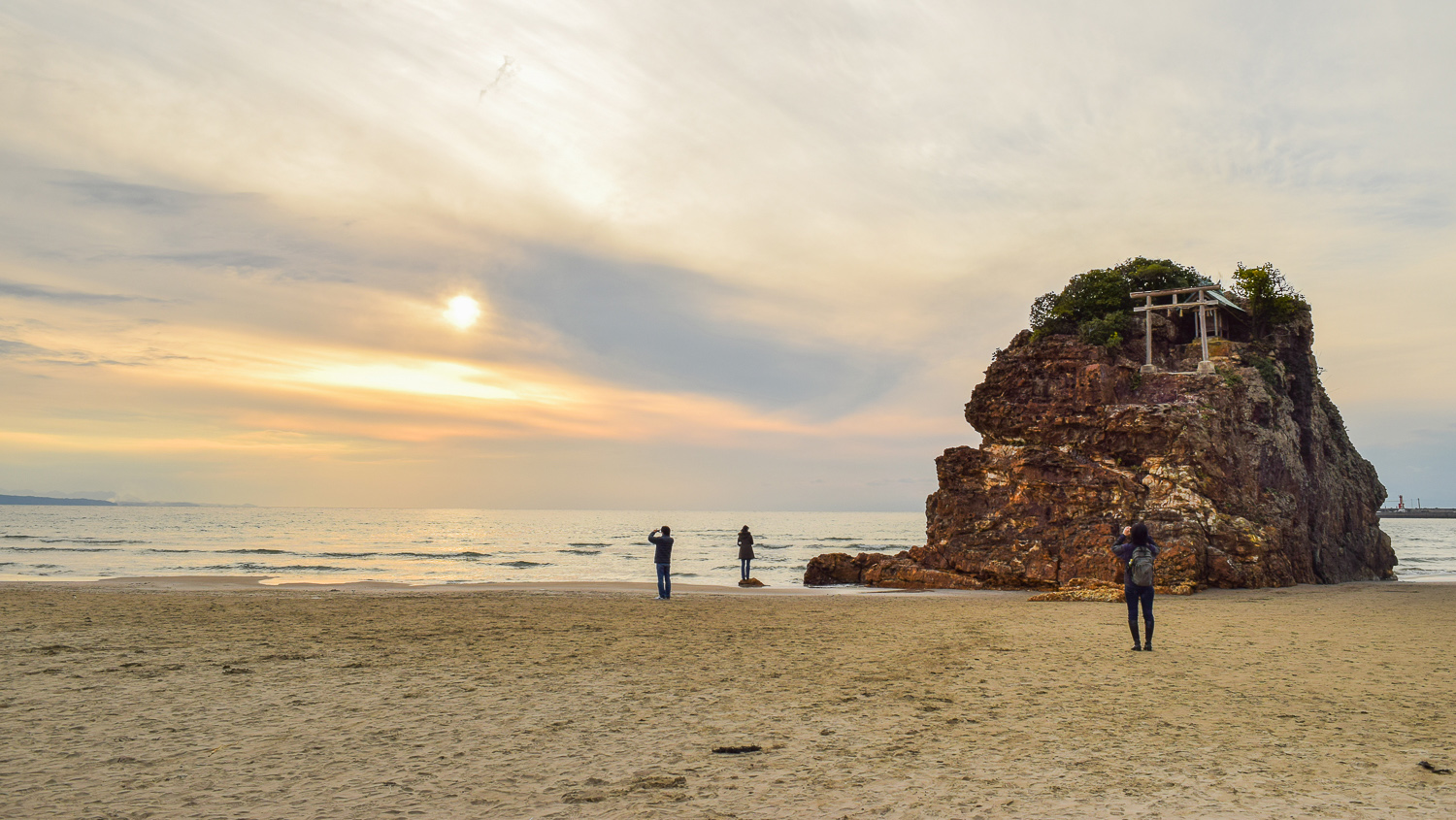
A Very Sacred Beach
Located less than a kilometer and within walking distance from Izumo Taisha Shrine is Inasa no Hama Beach. The beach is home to a tiny shrine called Bentenjima which rests on a large rock in the ocean. According to the Kojiki, eight million gods in Japan congregate on this beach during kamiarizuki and then they are escorted to Izumo Taisha Shrine for their seven-day meeting. While this occurs, Izumo residents try to avoid making loud noises to respect the gods.
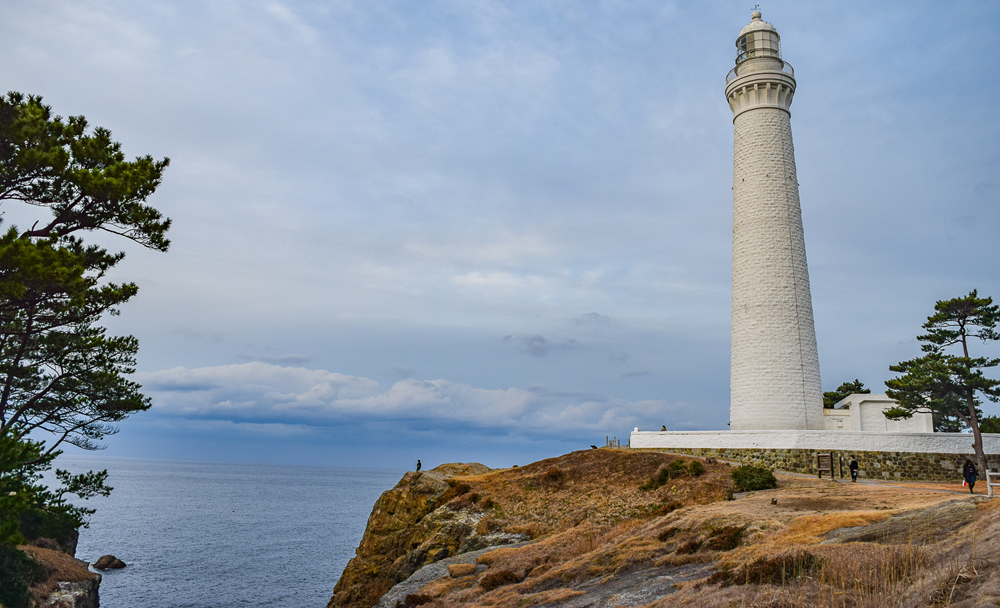
Hinomisaki Shrine and Lighthouse
If you’re in Izumo, it’s also worthwhile to travel along the coastline towards Hinomisaki Shrine and Hinomisaki Lighthouse. Hinomisaki is a bright, vermillion colored shrine dedicated to Susano and Amaterasu.
Some meters away is Hinomisaki Lighthouse. Measuring 44 meters, this imposing white stone building watches over the Sea of Japan. Visitors can climb to the top of the lighthouse for a small fee and walk along the cliffs to watch the seagulls rise and fall above the small outcrop called Fumishima.
If you get hungry, there are a lot of restaurants and food stalls around the lighthouse selling grilled squid and other dishes.
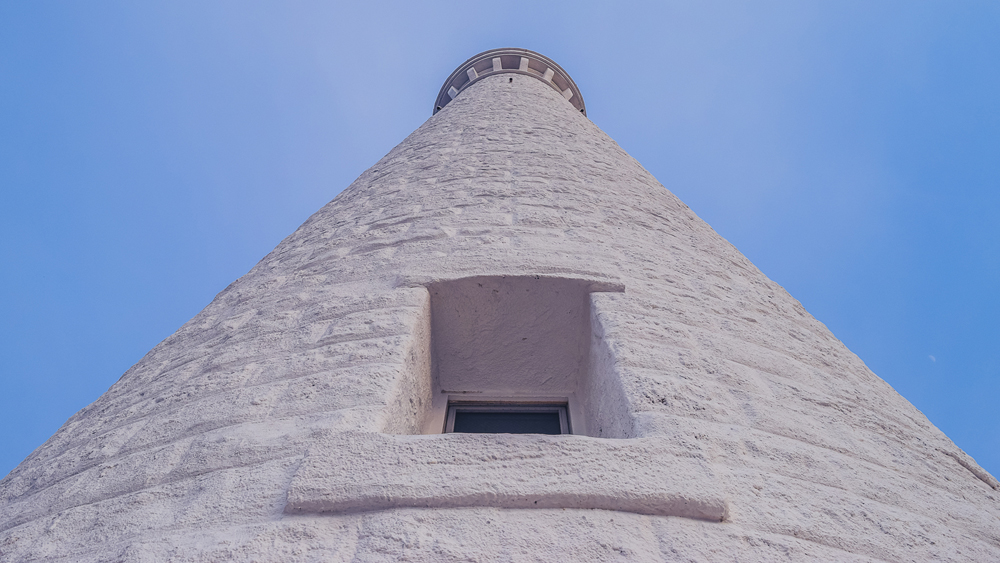
The Deets
Getting there: The quickest way to get to Izumo is to fly from Haneda to Izumo airport on JAL (90 minutes). Alternatively, you can take the JR Tokaido/Sanyo Shinkansen from Tokyo to Okayama and then change to the Yakumo limited express train for Izumo (six and a half hours). There’s also the overnight train that runs from Tokyo Station to Izumo known as Sunrise Izumo (12 hours).
Getting around: You can take the airport bus to Izumo Taisha Shrine (35 minutes). If you come via the Yakumo limited express train, stop at Izumo Taisha Mae station. Alternatively, you can get a bus from Izumo-shi station straight to Izumo Taisha Shrine. To get to Hinomisaki, you can get a bus from Izumo Taisha Shrine (20 minutes) or from Izumo-shi station (45 minutes).
More info: For more on Shimane prefecture and the Izumo area, click here.
Photos by Jesse Ramnanansingh












